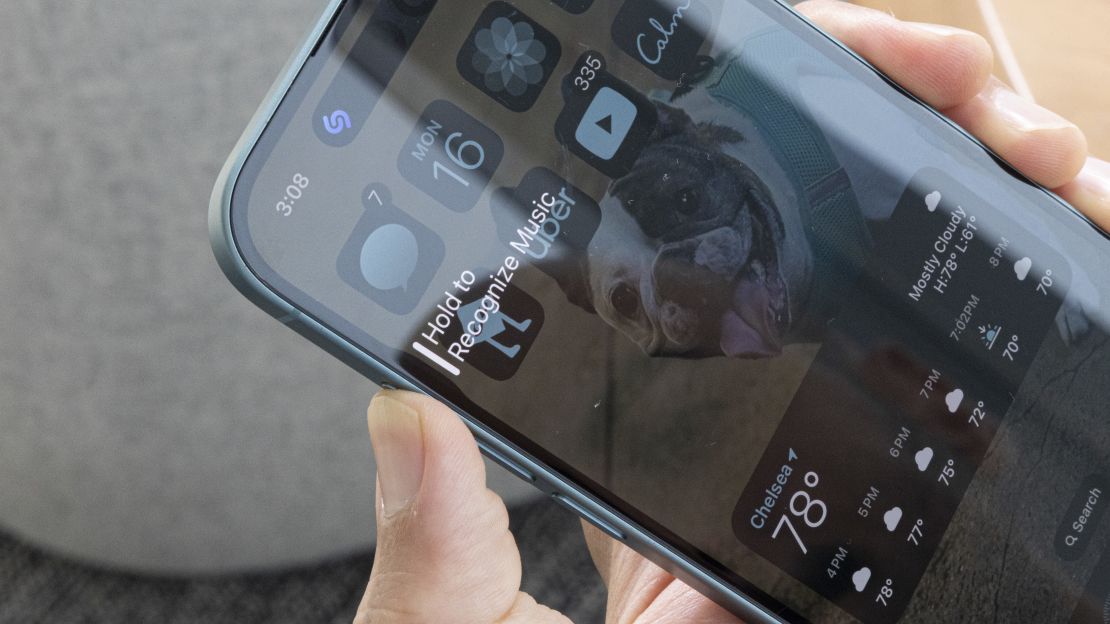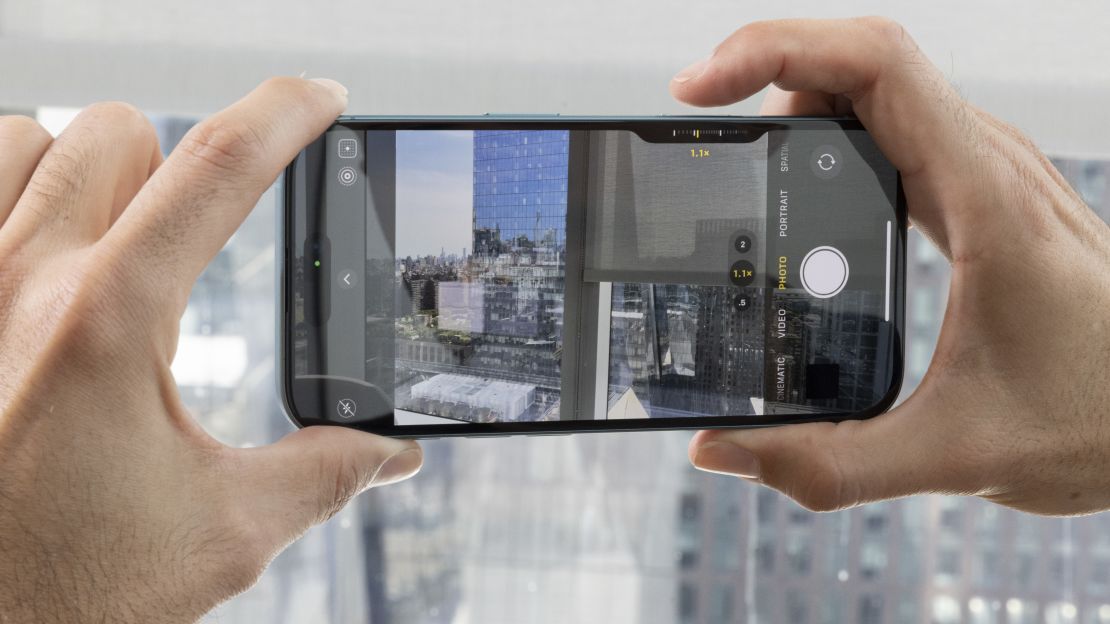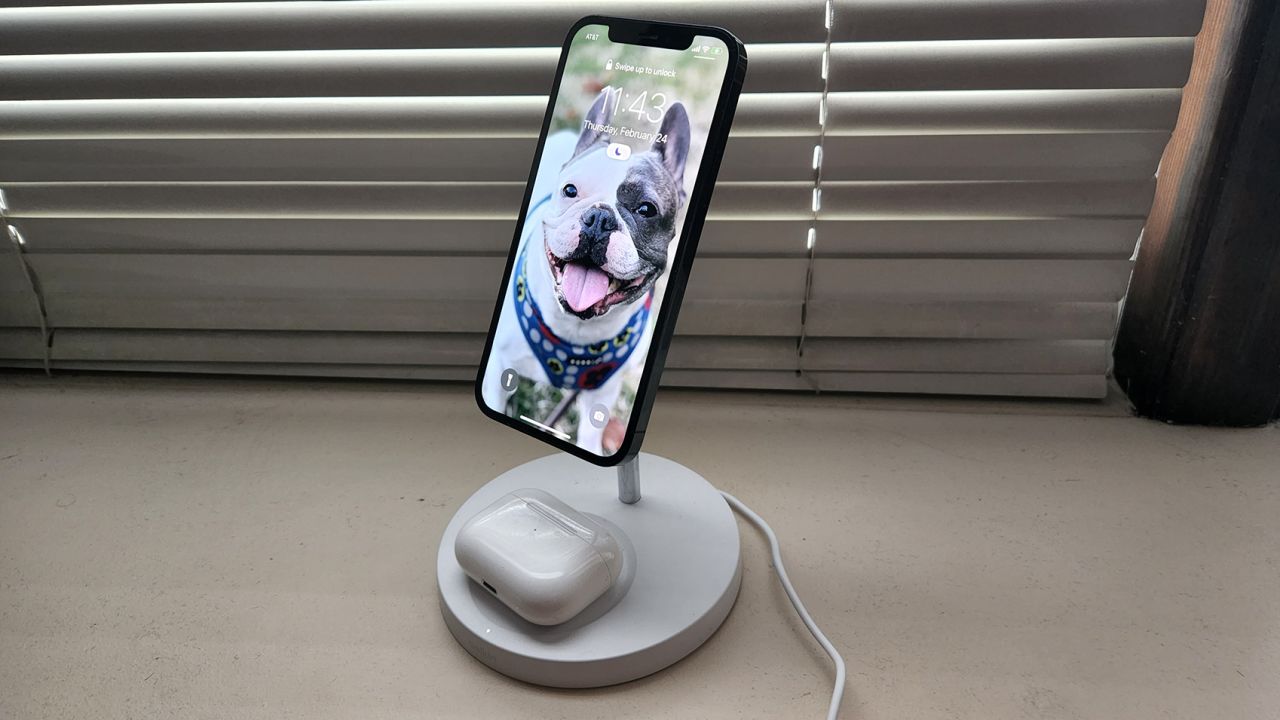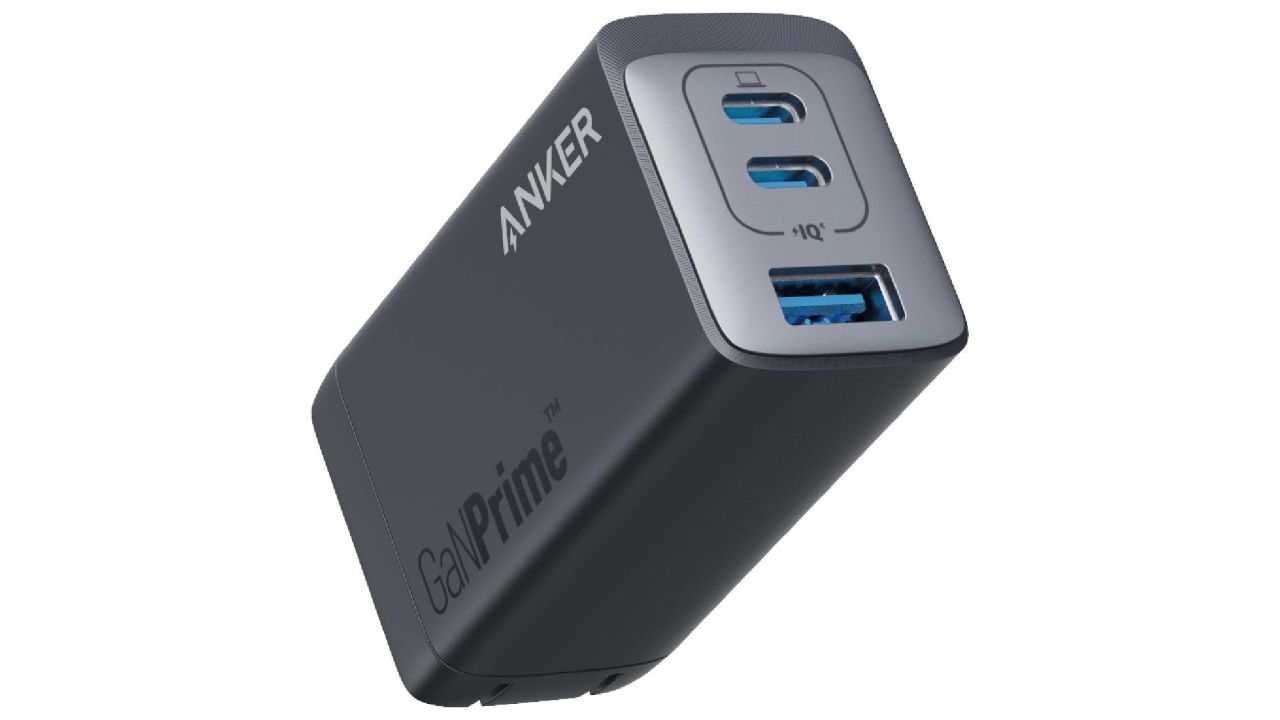Now that our new iPhone reviews are live, it’s the best time to help you decide if you should upgrade to the iPhone 16 or 16 Pro (or their larger counterparts). The debate about which phone to buy is arguably easier than ever, as our iPhone 16 review declared Apple’s entry-level phone is “so good that you probably don’t need the Pro.”
That said, my iPhone 16 Pro review shows off why the Pro and Pro Max are still worth their higher price — especially when you compare the cameras. But to get past this buying decision, you first must compare the biggest new features across both phones and decide if they do anything for you. As great as it is to own the newest technology, there’s also a virtue in upgrading as needed (and saving money for other expenses).
But are these best smartphone contenders good enough to make an iPhone 15 owner upgrade only a year into that phone’s life? I’m an iPhone 15 Pro Max owner myself, so I’ll do my best to explain where my head is at.
The entry-level 2024 iPhone packs the new Camera Control and inherits the iPhone 15 Pro’s Action button for a surprisingly complete starter phone.
The best optical zoom now comes in both the iPhone 16 and 16 Pro, and the latter is the iPhone to get if you want the best battery life.
You should upgrade to the iPhone 16 if …
You’ve been waiting for macro photography

Finally, Apple added the up close, detailed macro photography mode to its entry-level iPhone. Once exclusive to the Pro-series iPhones, this sensor lets you capture close-ups that are full of details, which let us get all up in the tiniest aspect of flowers and food in our testing. There’s not much to say here, but like many features on this list, it’s the kind of thing you may have coveted before or might be delighted to get this year.
You’re excited by its new feature-packed buttons

Colors and camera bumps aside, the iPhone 16 and its pricier siblings all kind of look the same this year — and that’s a good thing. Yes, this year the iPhone 16 packs the same two new-to-new-ish buttons as the iPhone 16 Pro: the Action button above the volume buttons and the Camera Control below the button that locks your phone and hails Siri. And that’s news that’s worthy of a bit of excitement.
The Action button, which debuted in the iPhone 15 Pro, replaced the mute switch with a button you can customize in the Settings app. So, while you can still use it to silence your phone to muffle unwanted sounds, my colleague Mike Andronico uses it to activate Shazam to recognize the music playing at his local dog-friendly coffeehouse. Or you could have a bit more fun by tinkering in the Shortcuts app, where I made an Action button menu that unfurls 11 options that include opening the YouTube app on my Apple TV (which often turns on my TV) and starting the timers I frequently use for cooking.

The Camera Control button, which is new to all the iPhone 16 models, is much more than meets the eye. A simple click opens the iPhone’s camera, so you can click again to snap a photo. You could also hold it down to record video, and release to stop recording. Light taps open up different options and settings, and an upcoming update will let you half press to focus before you fully press to take a photo — just like a traditional point-and-shoot camera does.
As an iPhone 15 Pro Max owner, I’m not exactly jumping to upgrade for the Camera Control just yet, but I bet that will change if my favorite apps add novel ways to interact with the button.
You go caseless or show off your iPhone’s color in another way
Put one finger up if you’re bored of iPhones coming in tones such as Desert, Natural and the standard black and white. Put another digit in the sky if you like one of the following colors: Pink, Teal and Ultramarine. Raise another finger if you like your phone to function as an expression of your personality and an extension of your wardrobe and accessories. Lastly, put a final finger skyward if you, like me, go caseless (I use a MagSafe PopSocket) or use a clear case.

If you’ve got one or more fingers in the air, you’ve got reason to purchase the iPhone 16, which comes in colors that make it aesthetically superior to its pricier Pro siblings. Me, personally? I love my dark-blue iPhone 15 Pro Max, so I’m not eager to switch hues, even though I think the folks who pay more for a Pro iPhone deserve more variety in their options.
You’ve been dying to play console games on your phone
I don’t know how many of you, like myself, have gone cold on mobile video games. With the exception of the imminent Apple Arcade release of supercharged card game Balatro, it’s been many years since I cared about games I can bring around town in my pocket. Apple’s been trying to reshape the conventional wisdom on mobile gaming by shipping phones with increasingly powerful graphics, while major studios deliver beloved triple-A video games on iOS.

2024 marks the year that Apple’s take on mobile gaming reaches the masses, as the iPhone 16 packs the new A18 chip that’s fast enough to run some big-name games that used to require a Pro-series iPhone. Titles such as Resident Evil Village, Death Stranding: Director’s Cut and Assassin’s Creed Mirage. And while the A18 is the little brother to Apple’s A18 Pro chip, this spec doesn’t make a huge world of difference so far.
In our testing, Resident Evil Village ran smoothly on the iPhone 16, which is a remarkable and surprising sentence I never really expected to type. Sure, it won’t look as sharp as on a big-screen TV, but it still looks quite similar to the original. Of course, these games haven’t been optimized for these smaller screens, so expect to squint through menus and lock in with the Backbone One controller so you’re not tapping on the screen to use the virtual controller that obscures gameplay further.
You should upgrade to the iPhone 16 Pro if …
You buy your iPhone for the zoom in its cameras
I know when to admit I was wrong, which is why I’ll fully take the blame for recommending one of my relatives buy a regular iPhone instead of its Pro counterpart last year. I didn’t take into consideration how much she loves to zoom in from afar in photos; this unnamed relative has politely stopped mentioning my mistake at gatherings. I bring this up because 2024 is an even easier year to pick an iPhone if you love to zoom, as the iPhone 16 Pro packs the same exact trio of cameras you find in the 16 Pro Max.
Yes, unlike the iPhone 15 Pro, this year’s smaller Pro iPhone has the same 5x optical zoom as its big brother, so you don’t get penalized for preferring a phone that isn’t inching toward tablet territory. Speaking of which, the iPhone 16 Pro and Pro Max are slightly bigger this year than before, and you should probably get your hands on these devices to confirm which fits your palm best. By contrast, the standard iPhones only have a 0.5x ultrawide, 1x camera and Apple’s “optical-quality” 2x zoom that uses a section of the main camera’s sensor. The iPhone 16 Pro offers all that plus the 5x optical zoom and the 1.2x- and 1.5x-optical-quality zooms.
I further insist you go Pro if you love to zoom long distances, because in our practice testing these phones on the streets of New York, we saw a huge gap between the iPhone 16 and iPhone 16 Pro’s 10x digital zooms. The regular iPhone 16 captured blurry and illegible shots, while the 16 Pro’s photos were practically crisp. iPhone 15 Pro owners who want that 5x zoom have good reason to upgrade this year, but as an iPhone 15 Pro Max owner, it doesn’t feel like there’s large enough differences in the camera array, though the jump from 12MP to 48MP for the ultrawide sensor is neat.
iPhone 16 Pro vs. iPhone 16 at 10x zoom.
You should upgrade to the iPhone 16 Pro Max if …
If you want longer battery life
“My iPhone used to last longer on a single charge” is one of the most frequent things that I hear when people finally take the plunge and upgrade their iPhones. When trying to pick the longest-lasting iPhone, you’ll probably notice that endurance increases with the larger models.
|
Apple iPhone 16
|
Apple iPhone 16 Plus
|
Apple iPhone 16 Pro
|
Apple iPhone 16 Pro Max
|
|
|---|---|---|---|---|
| Display | 6.1-in. (2556 x 1179) Super Retina XDR display |
6.7-in. (2796 x 1290) Super Retina XDR display |
6.3-in. (2622 x 1206) Super Retina XDR display, up to 120Hz |
6.9-inch (2868 x 1320) Super Retina XDR display, up to 120Hz |
| Battery Test Time (hours: minutes) | 15:17 |
19:41 |
16:50 |
20:40 |
Our looping 4K battery test (which keeps display brightness at 50%) backs up Apple’s estimates to a degree. While Apple’s ratings posit that there’s a six-hour differential between the video playback endurance when comparing the iPhone 16 Pro and 16 Pro Max, we saw just under four hours. Similarly, we timed the iPhone 16 Plus as lasting more than four hours longer than the iPhone 16 on the battery test. On top of that, the Pro models outlasted their less-expensive counterparts.
But these phones are also rated for better battery life than their predecessors, as Apple’s video playback claims place the iPhone 16 as lasting up to three hours longer than the iPhone 13 and up to two hours longer than the iPhone 14 and 15. The difference gets more stark when you look at the Pro and Pro Max iPhones. Apple rates the iPhone 16 Pro and Pro Max as lasting up to five hours more than their iPhone 13 Pro counterparts and four hours longer than the 14 Pro and 15 Pro models.
So, not only do the 2024 iPhones deliver more juice as you go up in size but they should beat their predecessors. The degradation of phone batteries basically ensures a new phone will always last longer than the one you’ve used for one or more years, but a better starting point is always a plus. My iPhone 15 Pro Max’s battery life is good enough for now that I’m not desperate to upgrade.
You should skip the iPhone 16 if …
You’re happy with your photos as they are
This year’s iPhones may see slightly larger designs for the Pro model and increased battery life, but they’re primarily all about the cameras. From the Camera Control across the whole line, to the 5x optical zoom and upgraded ultrawide sensor in the iPhone 16 Pro and the macro photos arriving in the iPhone 16, Apple’s plan to get people to upgrade largely revolves around photography.
That includes the latest generation of Photographic Styles, which you probably dismissed as mere filters in the iPhone 13 and later (and the iPhone SE 3). Now you’ve got a series of five “undertone” settings for skin tones and nine “mood” options that are more similar to high-quality filters. And you can even adjust them after the fact.
iPhone 16 Pro vs. iPhone 15 Pro Max ultrawide shots.
They’re surprisingly customizable (try dragging the little dot around the grid in the Camera app), and I’m already having fun playing around with them. This is especially interesting because in head-to-head testing, I’ve noticed the images shot on the iPhone 16 Pro and Pro Max look slightly lighter than those from my iPhone 15 Pro Max. Not to a terrible extent but enough that I’m thinking of editing them with Photographic Styles.
Put another way, if you’ve found issues with how the iPhone cameras capture skin tone, shadows or contrast, then you’ll find Photographic Styles especially interesting. And the best news is that Photographic Styles can be changed after you take your photos. There’s only one catch: You need to be using Apple’s HEIF format (select High Efficiency in Settings), which means you might need to convert to JPG later, depending on what you’re doing with these images.

In a moment where Google and Samsung are letting you add stuff to photos with generative AI, the whole concept of a photo’s authenticity is currently under siege. And while Apple’s also playing in the AI space with an upcoming feature that will let you you remove items and people from images (Google and Samsung offer similar tools), I’m happy to see Apple focusing on giving us control to adjust images for our own visual preference and accuracy rather than just going hog wild with fictitious additions. This is the kind of feature I could see myself spending a ton of time in — and has me eager to tinker — though I can easily understand that most users just want to take nice, crisp pictures and move on. The sheer popularity of Instagram alone suggests that people are probably fine with their existing means of shooting and editing photos.
You don’t use USB-C that often
If you haven’t upgraded your iPhone in a couple of years, you also have a potentially huge switch ahead of you with the iPhone’s new charging port. Last year, Apple swapped out its Lightning port for the universal USB-C connector in its iPhones, and the company continues to update its products with the same port used in everything from the best laptops to bluetooth speakers and video game controllers (the “U” in USB stands for “Universal” for a reason).

I personally love this move, as the simplicity of one cable to charge them all speaks to my want to clean and organize on a profound level. This means I’m one device closer to a USB-C-only life, something I know will sound like nothing to some of y’all. So, if you’re still primarily using Lightning cables to charge stuff like slightly older AirPods, Apple’s keyboards and mice, and your current iPhone, you might not get a whole lot out of the switch to USB-C.
You don’t need new-fangled display tricks
One of the neater tricks of the iPhone 16 lineup is the new minimum 1-nit brightness, which cuts its lowest possible brightness in half. This is big news for anyone who’s trying to read their phone in the dark in bed at night, and the folks at my local movie theaters who are annoying everyone else by checking their notifications mid-flick.
The iPhone 13 Pro and 14 Pro introduced two pretty cool pieces of screen tech to Apple’s lineup, with ProMotion in 2021 and the always-on display in 2022. If you’ve managed to hold on to your iPhone before these additions, you have some big treats to look forward to. Both of these Pro-series features are the kinds of things you might wind up seeing on a friend’s phone that will lead you to say, “Why doesn’t mine do that?”

ProMotion enables the iPhone 16 Pro display to render smoother-looking visuals by animating things such as a scrolling page, games and video at a faster pace. Plus, its adaptive refresh rate tech means your phone’s not always chugging along at that faster pace. The always-on display uses a super-low refresh rate so your phone can display lock-screen notifications, the time and your background at a very low brightness that doesn’t impact battery life.
If all this sounds like stuff you don’t need, then you’re probably good waiting for your current iPhone to bite the dust (or for Apple to drop one that really speaks to your needs).
How they compare

Apple iPhone 16
|

Apple iPhone 16 Plus
|

Apple iPhone 16 Pro
|

Apple iPhone 16 Pro Max
|
|
|---|---|---|---|---|
| Display | 6.1.-in. (2556 x 1179) Super Retina XDR display |
6.7-in. (2796 x 1290) Super Retina XDR display |
6.3-in. (2622 x 1206) Super Retina XDR display, up to 120Hz |
6.9-inch (2868 x 1320) Super Retina XDR display, up to 120Hz |
| Processor | Apple A18 |
Apple A18 |
Apple A18 Pro |
Apple A18 Pro |
| Storage | 128GB / 256GB / 512GB |
128GB / 256GB / 512GB |
128GB / 256GB / 512GB / 1TB |
256GB / 512GB / 1TB |
| Cameras | 48MP main Fusion camera, 12MP ultrawide camera, 12MP TrueDepth front camera |
48MP main Fusion camera, 12MP ultrawide camera, 12MP TrueDepth front camera |
48MP main Fusion camera, 48MP 0.5x ultrawide camera, 12MP 5x telephoto camera, 12MP TrueDepth front camera |
48MP main Fusion camera, 48MP 0.5x ultrawide camera, 12MP 5x telephoto camera, 12MP TrueDepth front camera |
| Size and Weight | 5.81 x 2.82 x 0.31 in., 6 oz. |
6.33 x 3.06 0.31 in., 7.03 oz. |
5.89 x 2.81 x 0.32 in., 7 oz. |
6.42 x 3.06 x 0.32 in., 8.0 oz. |
| Colors | Black, White, Pink, Teal, Ultramarine |
Black, White, Pink, Teal, Ultramarine |
Black, White, Desert, Natural |
Black, White, Desert, Natural |
| Material | Aluminum |
Aluminum |
Titanium |
Titanium |
Bottom line

Apple’s new iPhone 16 lineup is great, but the annual upgrade-or-wait debate is seemingly more balanced than ever. Those who’ve held out longer for a Pro-series iPhone will be rewarded the most for their patience, with the ProMotion and always-on display tech that others have enjoyed for years, among other neat features. The iPhone 16 Pro is a more enticing package than ever before now that it has the same 5x camera as the Pro Max. That’s especially true when both Pros are getting slightly larger — with the latter model possibly becoming too big for some hands. That said, those who go big will also reap the benefits of the best battery life in any of this year’s new iPhones.
If your excitement starts and ends with new ways to click to control the new iPhone 16, though, take the leap to the entry-level or Plus model with their Action button and Camera Control. You’ll also get the option for a bolder color for your iPhone and the power to play advanced video games wherever you go. Of course, if none of this thrills you, there’s always next year — and maybe the debut of Apple Intelligence (which requires the iPhone 15 Pro, iPhone 16 or 16 Pro) in October will change your mind.
Related products
This portable charger is a must for anyone out late with their iPhone 15 or 16, thanks to a built-in USB-C cord.
This charging station makes it easy to keep your iPhone and AirPods charged and ready for your next adventure.
Apple's latest entry-level AirPods AirPods 4 offer stellar sound quality, immersive Spatial Audio and lots of great features for a good price.





























